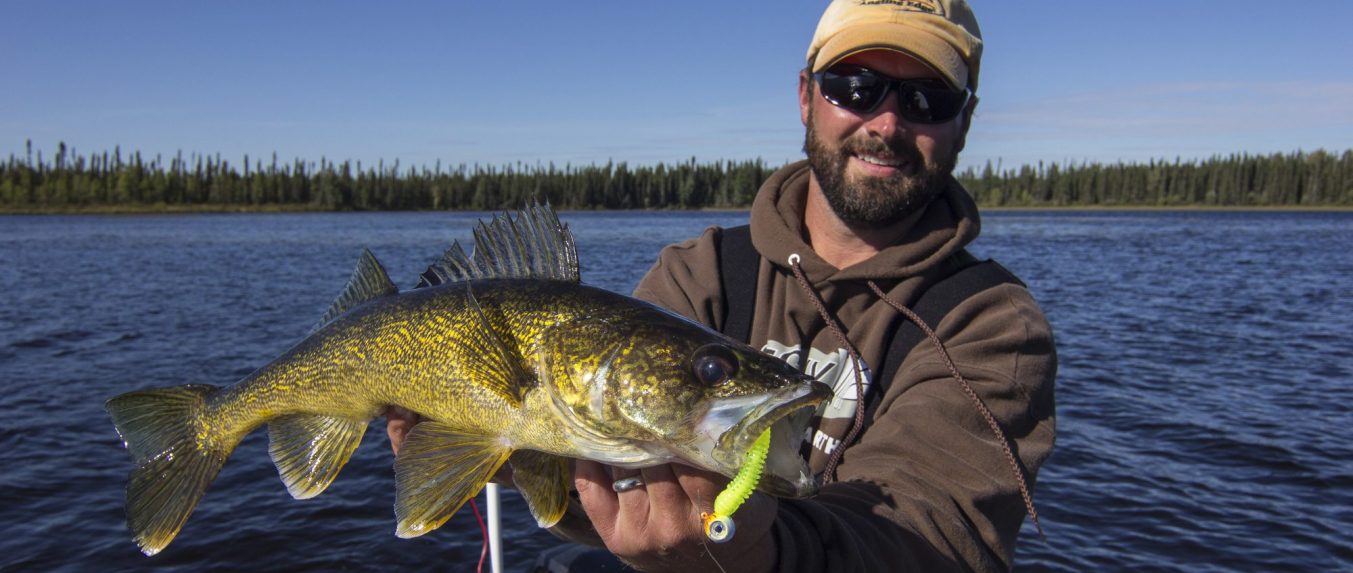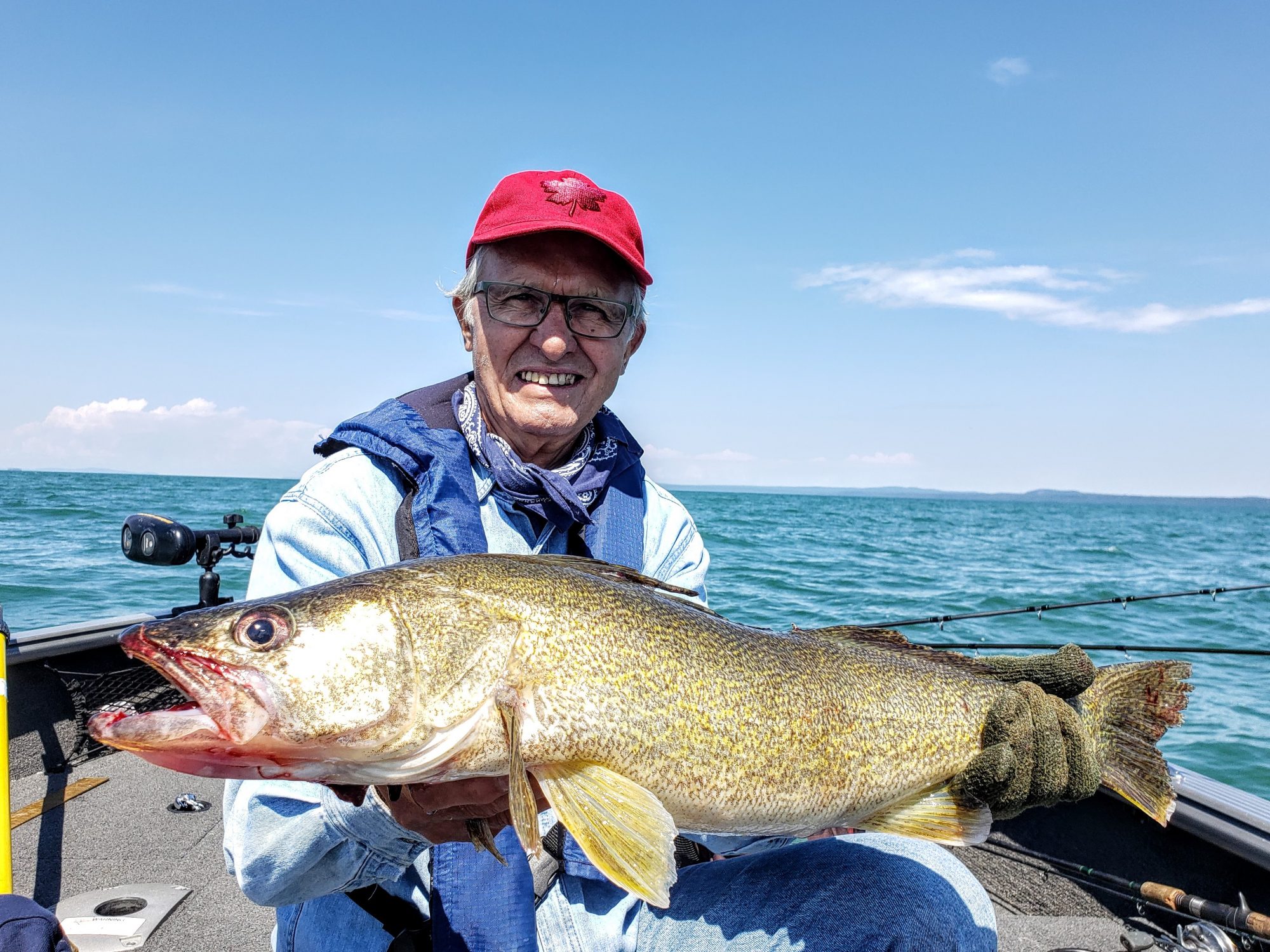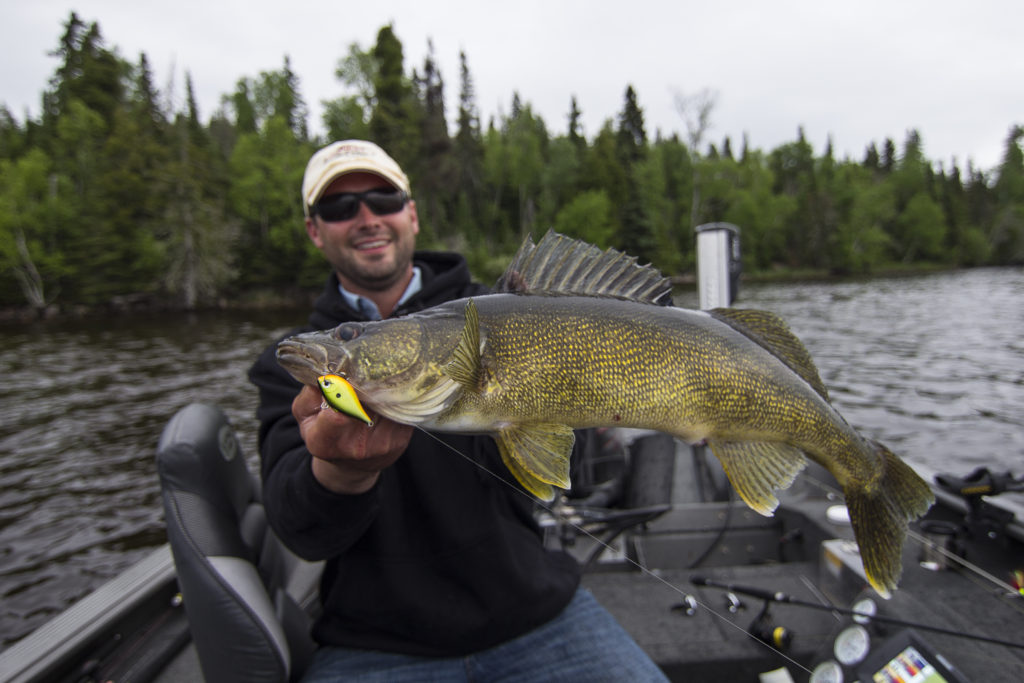
10 Walleye Facts
Back to Superior Country BlogWalleyes are a fish species native to Ontario. Their abundant population yet sometimes tricky to catch, and delicious meat make them arguably the most popular species to fish in Northern Ontario. You can find them in many different freshwater lakes and water systems throughout Superior Country, with a range of Lodges and Outfitters servicing walleye fishing experiences, you can expect to reel in the good times while Walleye fishing in Northern Ontario’s Superior Country.

1. Scientific Name
Commonly referred to as Yellow Pike, Pickerel and Dore, their scientific name is Sander Vitreus and belong to the Perch family.
2. Life Span
In captivity their lifespan averages 10-13 years, however in their natural wild habitat the average life span is anywhere between 15-20 year!
Related Article: 10 Brook Trout Facts
3. Size
Walleyes grow continuously throughout their life, while males are larger than females the first 1-3 years, the male matures at 3 years and females at 4 years. Come the 4 year mark the females will surpass males in size and weight as they have become mature. Males do not mature until their 5th year. At the 15 year mark, their average weight is 4.5lbs with a length of 23inches. At 20 years +, the population will consist of mainly females weighing in at 6.7-9lbs and a length of 26inches-29inches.

4. Spawning
Taking place in early spring, Walleye spawn shortly after the ice melts off the lakes, depending on the year this can be early April – early May. The areas they spawn in usually have gravelly/rocky bottoms, they prefer areas with a bit of a current to aerate the eggs and clear away sediment. The female Walleye can lay up to 100,000 eggs! Then the eggs undergo an incubation period of two – three weeks before hatching.

5. Habitat
Sensitive to light, Walleye are found in deeper waters of clear lakes while in more shallow areas of turbid (tea-colored) waters. They can be found in many different types of waterways/systems but prefer large shallow lakes that are turbid. Walleyes that inhabit lakes stick near the bottom during the day and will lurk closer to the shallows during the evening/night to feed. Unlike Northern Pike, they prefer to travel in schools, where one is caught, more are likely to be around.

6. Diet
Being a carnivorous fish, they will eat merely anything. Smaller Perch, minnows, and a range of various other fish species that is smaller than them. Frogs, crayfish, leaches, worms and small mammals have are also included in their common dietary options.
7. Common Baits / Lures
Using live bait and flashy colors increase success rates dramatically when fishing for Walleye. Lead-headed jigs with minnows, bright night crawlers and spinner jogs are among some of the most popular. Spinners, spoons and deep-running crankbaits are also commonly used. If fishing during mid-day or shortly before/after spawning, using lures that bounce themselves and bait along the bottom is often the “secret to success”.

8. Appearance
Their most notable characteristic is the main, large dorsal fin. It is spiny and accompanied by another positioned just behind it but is soft and more malleable. Walleye are known for their golden-yellow sides. They have dark green backs, white cream under bellies and dark green-black markings on their tail fin. Walleye have an odd eye appearance due to tapetum lucidum – a layer of light-gathering tissue at the back of the eye – which is similar to that of cats and dogs to aid their vision in the dark, making them elite nighttime predators.

9. Meat Quality
Arguably the most favored fish to consume in Northern Ontario, Walleye have white flaky fillets that are described to be sweet, very tender, and mild. They are perfect for someone new to eating fish as the flavor is not overbearing or too “fishy”. The quality of the meat highly depends on the water temperature and how long after the fish is caught to when it’s being cooked to eat.

10. Ontario Record
The current Walleye Ontario Record weighs in at 22.4lbs, 36.5 inches long with a girth of 21 inches!

 Walleye
Walleye Northern Pike
Northern Pike Lake Trout
Lake Trout Brook Trout
Brook Trout Steelhead
Steelhead Salmon
Salmon Smallmouth Bass
Smallmouth Bass Perch
Perch Superior Picnics
Superior Picnics
